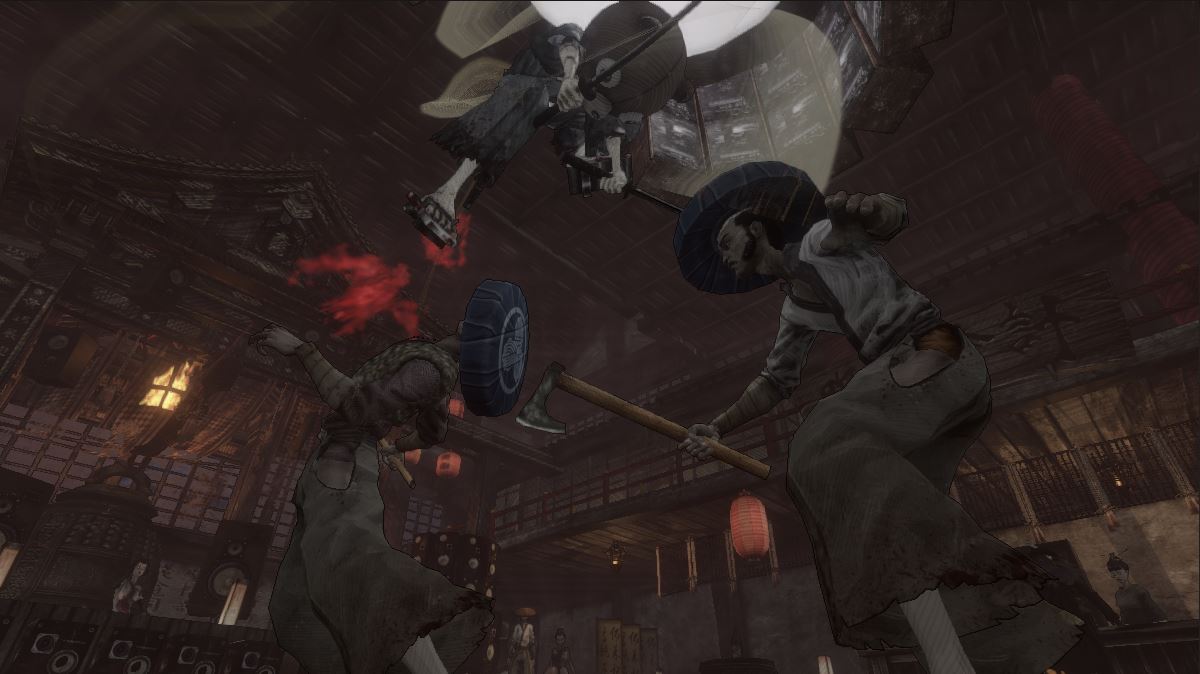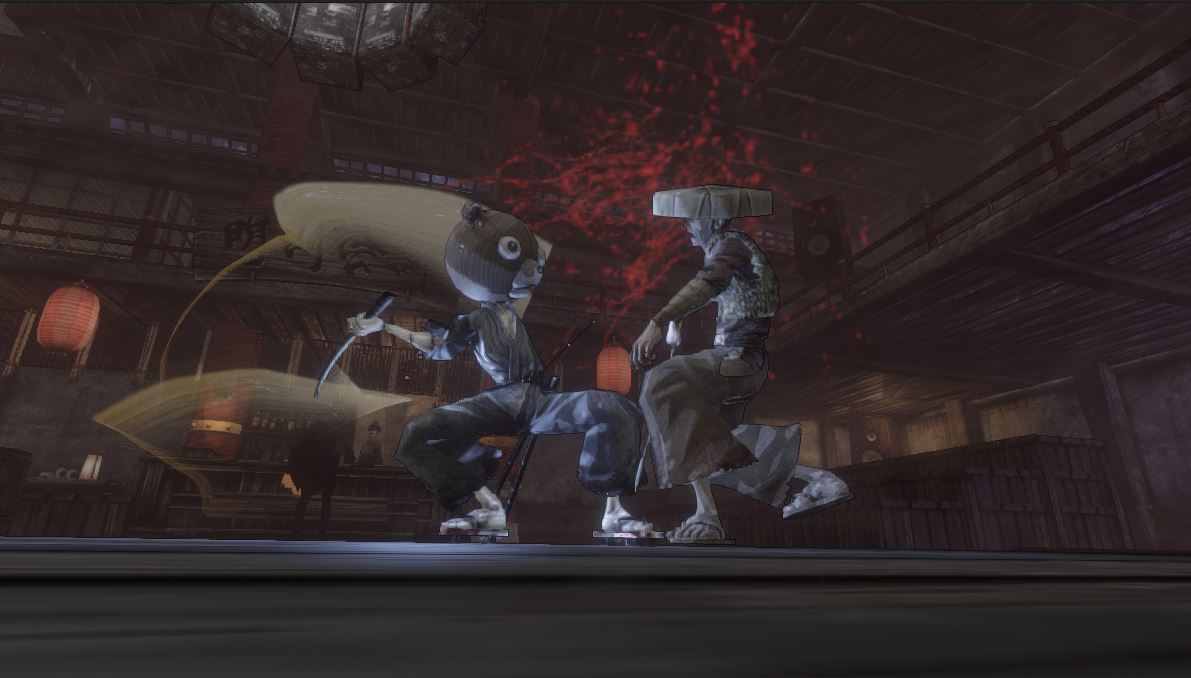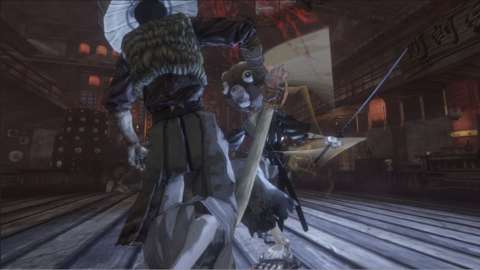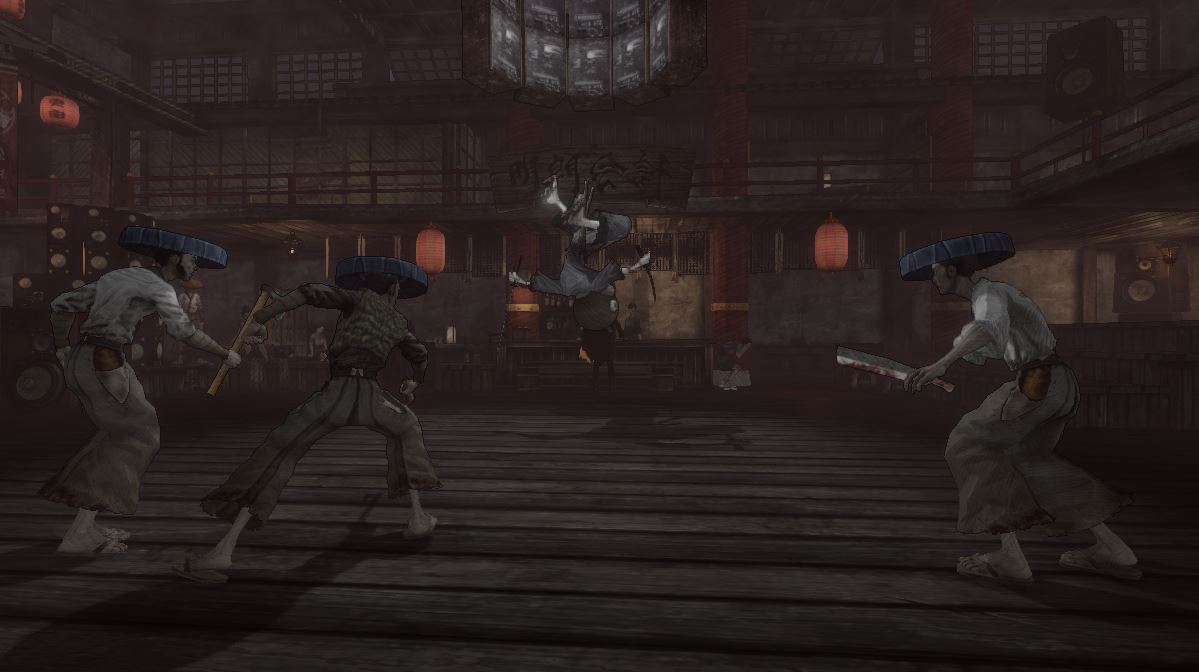Earlier this year at the Game Developers Conference, I spoke with Redacted Studios president David Robinson about the upcoming Afro Samurai 2. It was a lengthy conversation, in part because I enjoyed the original Afro Samurai (the Howard Drossin-penned and RZA-inspired soundtrack is particularly delightful), and in part because the stories behind Afro Samurai's development and its sequel were too fascinating to pull away from. At one time, Robinson was a rescuer of sorts, a producer who took troubled projects like Afro and Splatterhouse and wove their fraying threads into working entertainment. Now, he's leading a new studio to potential prosperity after successfully lobbying to continue the Afro Samurai story...and after retrieving art assets meant for the original that would have otherwise been ignored, never to be seen and enjoyed by anyone outside of the developers that created them.
I caught up with Robinson again recently to see if sequel was taking shape, and as it turns out, Redacted has ended up rebuilding more than it potentially bargained for. "As an indie developer, with fewer than 10 people on the new game, all asset development comes at a premium, so the thought was that we would be able to use some of the original assets," says Robinson. "But as it turns out, we have literally rebuilt almost all of the game just to make sure it fits in with the next-gen feel. Early on, it seemed that we were going to be able to reuse a lot of the assets, but after working with the Unity 5 engine for a while, we learned that it would be better to raise the bar."
Kingdom Come: Deliverance 2 - Official Cinematic Announcement Trailer Stellar Blade - BIBI ‘Eve’ Official Music Video Trailer | PS5 Apex Legends: Urban Assault Collection Event Trailer Total War: WARHAMMER III - Elspeth von Draken Gameplay Showcase Genshin Impact - "Arlecchino: Sleep in Peace" | Official Character Teaser Potionomics: Masterwork Edition - Official Announcement Trailer Snowbreak: Containment Zone - "Gradient of Souls" Version Trailer Harold Halibut GameSpot Video Review Nancy Drew: Mystery of the Seven Keys | World Premiere Official Trailer Modern Warfare III & Warzone - Official Cheech & Chong Bundle Gameplay Trailer SteamWorld Heist II – Official Reveal Gameplay Trailer Dead Island 2 – Official SoLA Expansion Gameplay Launch Trailer
Please enter your date of birth to view this video
By clicking 'enter', you agree to GameSpot's
Terms of Use and Privacy Policy
The catalyst for this change of approach wasn't Afro Samurai at all, but another developer's success with a similar art style. Says Robinson, "When we had a game like Borderlands borrowing from our style and moving it forward, it made us realize that what we created with the first game worked well, so then we just had to upgrade the look since graphics power across all devices has made amazing progress since we first released. Even on the character side, we found we had to re-create or considerably upgrade most of the assets. It makes it easier to have assets to copy, but in the end, it's never as easy as you think it's going to be. Shaders and lighting in next gen have required us to work hard to recapture the amazing cel-shaded look that the first Afro game pioneered."
The visuals aren't the only element to undergo a sea change. The original Afro Samurai allows you to slow the pace and use an analog stick to slice through enemies at any angle. When I first saw the sequel in action, it seemed that the game had removed the skill entirely, relying instead on swordplay styles you can switch between at any time. Targeted slow-motion strikes haven't been removed, however: they have simply been recontextualized in a way that, in Robinson's eyes, should welcome a broader audience.

I wasn't a fan of Unity before I became an indie. Now, it's literally the oxygen we breathe.
David Robinson
"We changed the game fundamentally to allow more of the fans of the [manga/anime] series to be a part of the new game and every aspect of it," says Robinson. "We took a long hard look at all the consumer and press comments from the first Afro Samurai game to see what we needed to improve. One key message we took away from this was the fact that the game controls were just too 'hardcore' focused. This kind of struck me, since I consider myself a hardcore type gamer. I have lots of friends who just aren't crazy Street Fighter fans, but love Afro. Our biggest challenge therefore was how to make the game controls feel good to the existing gaming fan community while making them a little more accessible to new fans. So we have been developing a system that can satisfy both types of gamers and that at the end of the day will make both sets feel badass as they execute on that final finishing move."
"However," continues Robinson, "We haven't abandoned the slicing systems. Far from it: We've expanded on it and enveloped new ways to exploit it but across a world of new characters and storylines. It's an integral part of the Afro branch of the new styles system. As you get closer to gaining true Afro-ness in your upgrade tree in this game, you will be able to slice just like in the old game."


As it happens, the original Afro Samurai was originally meant to have multiple combat styles, along with, as Robinson puts it, "a billion other things" that were designed for the game but never made it into the final release. How does this system in Afro Samurai 2 work? According to Robinson, "Each time you take down a new boss or you go through a major story element you'll be able to add that combat chip to your combat wheel, so basically the player learns all these new combat moves and adds it to their combat inventory. All these new character styles and moves can be upgraded, similar to what you'll find in an RPG. This means that the player can add new moves, animations, capabilities, on a per chip basis. For example, the Afro Style, once upgraded, will allow you to perform the old afro slice. The new Kuma style approaches slice in its own way. In each volume, your character will upgrade its combat style until eventually you will be able to do amazing things with all the abilities you've picked up and learnt to master. This will give the game the depth and staying power an episodic game needs. Players will pick up and learn new combat moves as the game progresses until they will see the ultimate version of their characters."
There's a key word above you might have missed: "volume." Afro Samurai 2 will be released in installments, an episodic approach we associate with story-based games like those that Telltale makes, but typically not with hack-and-slash action extravaganzas. But it makes sense when you consider Afro Samurai's manga and anime roots; Why wouldn't an associated game also be serialized? Robinson tells me that this approach allows each episode to have its own feel, while giving the overall arc a clear beginning, middle, and end. "From a franchise perspective we want to engender to the fans that each volume will feel different from the last," says Robinson. "We want them to feel that the ride we take them on will get wilder and wilder each time. We have some pretty cool surprises in store for the fans, and being episodic allows us the flexibility with development to experiment more with some crazy ideas, changing up the flow every few months with fresh content."
Being a small team, we have to pick our battles and pray the middleware providers have their collective shit together.
David Robinson

All this is being done without the financial backing of a giant publisher like Namco Bandai, though games publisher Versus Evil has partnered with Redacted to bring Afro Samurai 2 to PC and current consoles. Every new idea is a make-or-break moment for the studio, which doesn't have the $10M budget of the original Afro Samurai. Money has not been the only challenge Redacted has faced, however.
"With no large publisher to back the team's technology plan long term, we had to adapt Afro to use [popular game engine] Unity," says Robinson. "And that posed huge challenges. We had to get features and shaders unique to the Afro franchise to work in an engine that simply wasn't cut out for it. In that regard we have found ourselves right back where we started from on the first Afro, developing tech and features on a brand new engine under huge time and budget constraints with no safety net. As far as I know, we are one of the first teams that will be shipping [a] next-gen [game] on Unity 5. It's tough to be the first ones. There are never handrails where you need them, and being a small team, we have to pick our battles and pray the middleware providers have their collective shit together."

Being episodic allows us the flexibility with development to experiment more with some crazy ideas.
David Robinson
Unity has been the team's saving grace; Afro Samurai 2 is being made by less than a dozen people working on a shoestring budget, so utilizing every potential resource is vital. Says Robinson, "That's where the Unity Store has also been a lifesaver for us. It's cool. We sell some bottles and cans we collected from the neighbor's trash, and boom! We can afford that plugin that saves us three weeks' programmer time we didn't have in the first place. I wasn't a fan of Unity before I became an indie. Now, it's literally the oxygen we breathe. No shit. Pardon my language. Engines make me emotional."
Robinson is an emotional guy in general, actually, clearly excited by his game, his studio, and the partnerships he's created. Wu-Tang Clan founder RZA is again on board as Music Director; American Sniper co-author Jim DeFelice is penning the story. I haven't yet played Afro Samurai 2 myself, save for a few moments of button-mashing at GDC. But when a designer is this enthusiastic, the joy is contagious. "What carries us is the passion for making games and telling stories we think fans want to see, play, and hopefully buy," says Robinson. From almost anyone else, I'd dismiss this statement as typical public-relations-speak. When Robinson says it, I wholeheartedly believe it.

